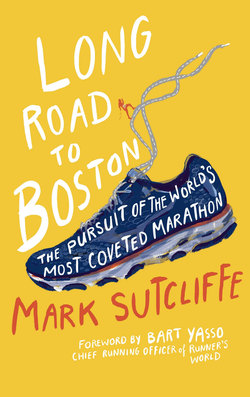Читать книгу Long Road to Boston - Mr Mark Sutcliffe - Страница 11
На сайте Литреса книга снята с продажи.
CHAPTER 6
ОглавлениеClarence DeMar was one of many heroes of the first seven decades of the Boston Marathon, when the race drew significant attention but a small number of participants, at least in relation to modern marathons. In a time when everyday life was more laborious and running gear and training techniques were primitive, endurance running was largely an obscure sport populated by a small but committed community of amateur athletes.
Of the roughly 650,000 people who have crossed the finish line of the Boston Marathon in the past one-hundred and twenty years, more than 600,000 have done it since 1980. Prior to 1964, the race never had as many as even three hundred participants in one year. The fastest athletes raced for glory, not cash; there was no prize money until 1986.
Tom Longboat, an Onondaga runner from Ontario, was described as “the most marvelous runner who has ever sped over our roads” by the Boston Globe when he won the 1907 marathon. Canadians won seven of the first nineteen Boston Marathons, including three of the first five. Finishing third in 1907 was Johnny Hayes, who went on to win the 1908 Olympic marathon, touching off a period known as “marathon mania,” when worldwide interest in the distance spiked and showdown events among the planet’s best runners were regularly scheduled.
In 1917, there were calls for the Boston Marathon to be cancelled. Less than two weeks earlier, the United States had entered the Great War and there were fears that Boston Harbor might be under attack by German submarines that had recently sunk supply ships in nearby Atlantic waters. It was determined that the marathon should become a show of fitness and solidarity and so the race proceeded. New York bricklayer Bill Kennedy won in a showdown with two Finnish runners. In a display of American patriotism, Kennedy had said before the race, “We must repel the Finns.” The Globe suggested the crowd was the largest at any marathon in history.
Along with Bricklayer Bill, among those early Boston champions were a mill weaver, a milkman, a plumber and a delivery boy. Many in the 1920s were military veterans. In 1925 Chuck Mellor of Chicago beat Clarence DeMar, running with a wad of tobacco in his cheek and having placed a copy of the Boston Globe under his shirt to protect him from the wind.
In 1934, Johnny Kelley, a florist’s assistant from Arlington, Massachusetts, battled with a Finnish-born cobbler from Ontario named Dave Komonen. Kelley challenged Komonen for the lead several times until finally falling behind with five miles remaining. It was the first of a few disappointments for Kelley, including the one that was immortalized in the name of Heartbreak Hill.
But Kelley also became the most prolific and beloved runner in the history of the Boston Marathon. He won the race in 1935 and 1945, and finished second a record seven times. From 1934 to 1950, he placed in the top five fifteen times.
According to his obituary in the Globe, Kelley had wanted to be a baseball player. But when he was twelve years old, his father took him to watch the finish line of the marathon and he was hooked. For decades, he was synonymous with the race, so much so that “Here comes Johnny Kelley” became a familiar refrain sung by spectators along the route.
There’s a monument to Kelley just to the side of the course in the Newton Hills, depicting both a younger and older version of the accomplished runner. It’s not easily visible from the route on race day, buried in some trees and behind the spectators. But many runners make a separate trip to Newton to see the monument.
Kelley ended up running Boston sixty-one times, the last when he was eighty-four years old. “The Boston Marathon was his heart and soul,” his nephew told reporters when Kelley died in 2004 at the age of ninety-seven.
Like so many Boston champions of his time, Kelley was an amateur. He never collected any prize money and labored full-time in electrical maintenance, doing his marathon training in the evenings after a physically demanding day at work. He claimed that running offset the harsh conditions of his job, including working with asbestos. “The fact that I ran at night after work, in the fresh air, probably saved my life,” he said. “I owe an awful lot in this world to my running.”
In another interview, Kelley said: “People always ask me why I keep on running. I keep running because I love it. To me, there’s nothing else like it in the world.”
